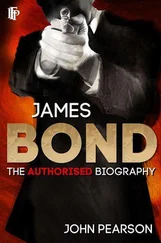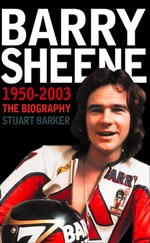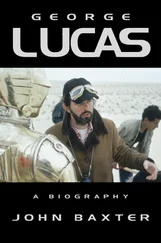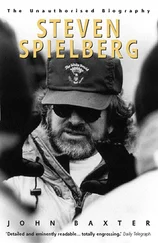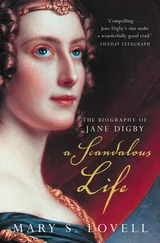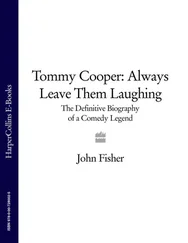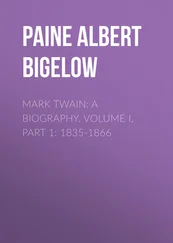Once De Niro became an actor, he scorned Muni, calling his performance in Howard Hawks’ 1932 Scarface ‘awful. He’s the biggest ham. It was so hammy. You could say he was possibly a great stage actor, but a lot of his movies were over the top. Like I am a Fugitive From a Chain Gang.’ Yet Muni remains the thirties screen actor whom De Niro resembles most.
Like Chaney and Muni, De Niro would always avoid period pictures or the great classical roles. To play Othello or Don Juan would be like putting on a costume thousands had worn before. But to transform yourself into someone entirely new – that was genius. Chaney’s insistence on strapping his calf to the back of a thigh to simulate amputation, on duplicating blindness by pressing the membrane of an egg to his eyeball, or screwing wire rings into his eye sockets to create the crazy glare of a burned face in The Phantom of the Opera , would all find resonances in De Niro’s work. His Jake La Motta in Raging Bull is a Chaney performance. And the comment a contemporary writer made of Chaney, ‘To endure pain for his art gave him a strange pleasure,’ applies equally well to De Niro.
‘He developed a thick-muscled neck and a fighter’s body,’ Pauline Kael wrote of De Niro in Raging Bull , ‘and for the scenes of the broken, drunken La Motta he put on so much weight that he seems to have sunk into the fat with hardly a trace of himself left. What De Niro does in this picture isn’t acting, exactly. I’m not sure what it is. Though it may at some level be awesome, it definitely isn’t pleasurable.’
Impressive as she found the effort, Kael felt it failed in what it set out to achieve. ‘De Niro seems to have emptied himself out to become the part he’s playing and then not got enough material to refill himself with: his La Motta is a swollen puppet with only bits and pieces of a character inside, and some semi-religious, semi-abstract concepts of guilt.’
Marcello Mastroianni dismissed De Niro’s performances as the opposite of true acting: ‘By nature, the actor is a kind of wonder who can allow himself to change personalities. If you don’t know how to do this, it’s better to change professions. I think it’s ridiculous to imagine that to play a taxi driver or a boxer you have to spend months and months “studying” the life of cabdrivers and the weight of fighters.’
But ‘Chaney’ roles appeal to shy actors, because the performer plays them effectively alone. And there was no doubting De Niro’s shyness. Speaking about his days as an acting student, he remarked, ‘An actor is sensitive as it is – shy – and the whole point of you doing this [acting] is that you want to express yourself. There’s a kind of thread there as to why people become actors.’ De Niro would become famous, or notorious, as an actor with whom there was little or no give-and-take. ‘I think playing opposite De Niro is a challenge for any actor,’ says Cybill Shepherd, ‘because he is a master of underplaying.’ Actors strain to make some contact with him in a scene, and usually fail. Without any way of knowing what goes on in his mind while the camera rolls, they emerge from the experience aware only that they have come off second-best.
De Niro never socialises with fellow actors between scenes, and they in turn avoid him, instinctively giving him the space justified by his huge investment in the created personality. Over the years, De Niro learned to encourage this reaction by only appearing on the set for his own scenes, and remaining aloof from the rest of the cast, who are instructed not to talk to him or even meet his eye. Paradoxically, he found anonymity in the least likely of all places – the spotlight.
In 1954, Jean-Paul Sartre published Kean , updating Alexandre Dumas’s play about the early-nineteenth-century actor of whom Coleridge had said that to see him act was ‘like reading Shakespeare by flashes of lightning’. Sartre’s Edmund Kean has become a victim of his virtuosity, and can no longer distinguish between real life and acting. Halfway through a performance as Othello, he scrapes off his make-up and roars his frustration to the audience in an outpouring of the anger that is never far below the surface of any actor’s performance.
Such rage was a crucial component of all the roles played by actors like Chaney and Muni. Adopting the character of another man gave one a licence to unleash one’s darker impulses. To play Quasimodo without swinging madly from the bells of Notre Dame, or to embody the phantom without burning down the Opera, was inconceivable. Though Muni would always be remembered for the machine-gun shootout that ended Scarface , even his roles as Zola, Juarez and Louis Pasteur demanded a final scene in which, occupying centre stage, the actor stormed, ranted or cajoled for ten bravura minutes.
Rage is Robert De Niro’s gift to the cinema. Without it, he would be little more than the proficient performer of The Last Tycoon, Falling in Love, We’re no Angels and his many other flops. But it is when he injects into such roles the fury unleashed in Taxi Driver, Raging Bull or The Deer Hunter that we see De Niro at his most effective.
‘He appears to have a tremendous potential for violence,’ says Kenneth Branagh. ‘He is one of the more frightening people I have met in my life, and you seriously wouldn’t want to cross him. It’s just that moment where perhaps you’ve said something and his eyes just “go”. It’s not so much the physical threat as the potential for him to be very, very free with whatever aggression he might feel. You wouldn’t want to get in the way of that. I’ve seen him in a couple of situations where the smile just drops, and you really don’t want to be there when that happens. You would imagine that you would basically just get thumped.’
Greenwich Village provided a rich environment for the maturing Bobby. Instead of grocers and butchers, the shops at street level were jazz clubs and cafés. In summer, music poured from open windows. Cultural diversity ruled. Émigrés and refugees from Germany and Austria mingled with Italians and Jews who were migrating from the old ghettos into the Village. None of this was lost on the young Bobby, who would develop an instinct for the styles of speech, clothing and movement that differentiated one class, race or calling from another.
For the summer holidays, he went upstate to Syracuse, to stay with his father’s family, acquiring the cadences of Italian English that he would employ in so many of his films. Coaching him for his role in Cape Fear , an expert in accents would label his natural way of speaking ‘Italian-American’, and his career would be hampered when, playing an Italian in his first major Hollywood film, he would be so convincing that people assumed he was imported from Italy for the role.
In Syracuse, he also brushed against organised crime – an Italian industry in the US. In 1950, Senator Estes Kefauver, enquiring into the rackets, made public the already widely-acknowledged existence of ‘a nationwide crime syndicate, a loosely organised but cohesive coalition of autonomous crime “locals” which work together for mutual profit. Behind the local mobs that make up the national crime syndicate is a shadowy criminal organisation known as the Mafia.’ None of this came as news to the large Italian communities of Syracuse and Rome, where Mafia caporegimes milked the construction and restaurant businesses in which so many Italians worked. When De Niro got round to playing the young Vito Corleone in The Godfather II , he didn’t need to look far for inspiration.
Back in New York, Bobby started in the public school system, at PS.41, just round the corner on West 11th Street. He stayed there until the fifth grade, when he was about eleven. Through her work for Maria Ley Piscator, Virginia got him into the Saturday-morning acting classes of what was now called the Erwin Piscator Workshop. It was here, aged ten, that he played his first dramatic role, the Cowardly Lion in a production of The Wizard of Oz. He also appeared in a version of Chekhov’s The Bear which toured some New York schools. But there was no overnight conversion to acting. ‘I stayed for a few years,’ De Niro says off-handedly of the Workshop. ‘I wasn’t interested.’
Читать дальше

